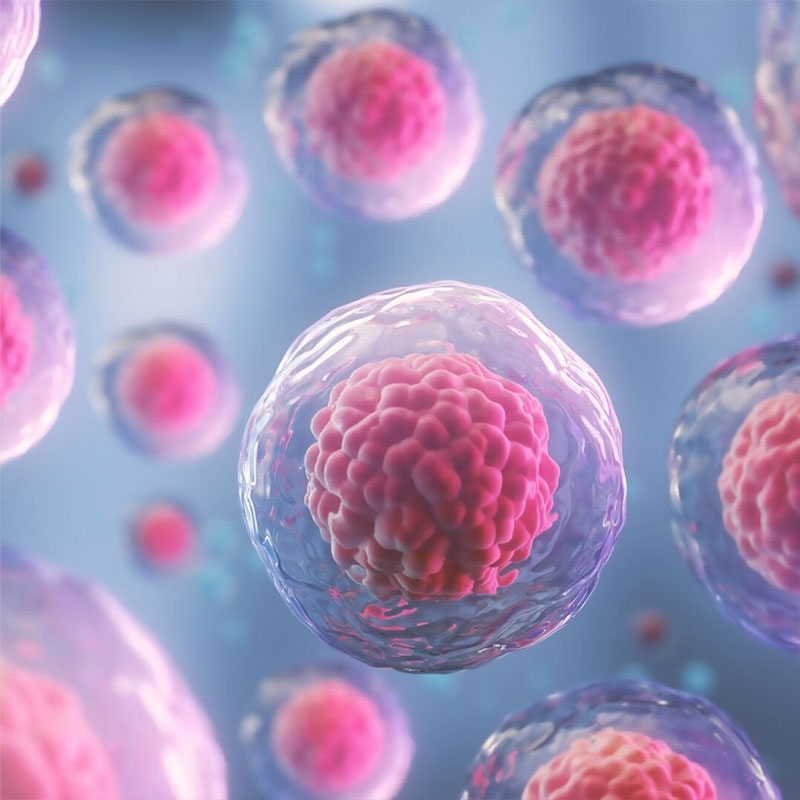
Embryonic stem cells (ESCs)
These are sourced from the intracellular matrix of gastrula (embryos) and have tremendous promise in regenerative medicine. These cells can differentiate into more than 200 types of cells representing three germ layers. With defined culture conditions, ESCs can be transformed into hepatocytes, retinal ganglion cells, chondrocytes, pancreatic progenitor cells, cone cells, cardiomyocytes, pacemaker cells, eggs, and sperms which can be used in regeneration of tissue and treatment of disease in tissue specific manner.
Tissue Specific Stem and Progenitor Cells (TSPCs)
TSPCs have potential to differentiate into other cells of the tissue. Characteristically inner ear stem cells can be transformed into auditory hair cells, skin progenitors into vascular smooth muscle cells, mesoangioblasts into tibialis anterior muscles, and dental pulp stem cells into serotonin cells. The 3D-culture of TSPSCs in complex biomaterial gives rise to tissue organoids, such as pancreatic organoid from pancreatic progenitor, intestinal tissue organoids from intestinal progenitor cells, and fallopian tube organoids from fallopian tube epithelial cells. Transplantation of TSPSCs regenerates target tissue such as regeneration of tibialis muscles from mesoangioblasts, cardiac tissue from AdSCs, and corneal tissue from limbal stem cells. Cell growth and transformation factors secreted by TSPSCs can change cell fate to become other types of cell, such that SSCs coculture with skin, prostate, and intestine mesenchyme transforms these cells from MSCs into epithelial cells fate.
Mesenchymal Stem Cells (MSCs)
MSCs are CD73+, CD90+, CD105+, CD34−, CD45−, CD11b−, CD14−, CD19−, and CD79a− cells, also known as stromal cells. These bodily MSCs represented here do not account for MSCs of bone marrow and umbilical cord. Upon transplantation and transdifferentiation these bodily MSCs regenerate into cartilage, bones, and muscle tissue. Heart scar formed after heart attack and liver cirrhosis can be treated from MSCs. Extracellular matrix coating provides the niche environment for MSCs to regenerate into hair follicle, stimulating hair growth.
Umbilical Cord Stem Cells (UCSCs)
UCSCs, the most readily available source of stem cells, have emerged as a futuristic source for personalized stem cell therapy. Transplantation of UCSCs to Krabbe’s disease patients regenerates myelin tissue and recovers neuroblastoma patients through restoring tissue homeostasis. The UCSCs organoids are readily available tissue source for treatment of neurodegenerative disease. Peritoneal fibrosis caused by long term dialysis, tendon tissue degeneration, and defective hyaline cartilage can be regenerated by UCSCs. Intravenous injection of UCSCs enables treatment of diabetes, spinal myelitis, systemic lupus erythematosus, Hodgkin’s lymphoma, and congenital neuropathies. Cord blood stem cells banking avails long lasting source of stem cells for personalized therapy and regenerative medicine.
Bone Marrow Stem Cells (BMSCs)
BMSCs, the soft sponge bone tissue that consists of stromal, hematopoietic, mesenchymal and progenitor stem cells, is responsible for blood formation. Even halo-HLA matched BMSCs can cure from disease and regenerate tissue. BMSCs can regenerate craniofacial tissue, brain tissue, diaphragm tissue, and liver tissue and restore erectile function and transdifferentiation monocytes. These multipotent stem cells can cure host from cancer and infection of HIV and HCV.
Induced Pluripotent Stem Cells (iPSCs)
Using advanced technology in gene editing, terminally differentiated “regular” adult cells can be transformed intoembryonic-like cells. It is possible that adult cells can be transformed into cells of distinct lineages bypassing the phase of pluripotency. The tissue specific defined culture can transform skin cells to become trophoblast, heart valve cells, photoreceptor cells, immune cells, melanocytes, and so forth. Extracellular matrix complexation with iPSCs enables generation of tissue organoids for lung, kidney, brain, and other organs of the body. Similar to ESCs, iPSCs also can be transformed into cells representing three germ layers such as pacemaker cells and serotonin cells.